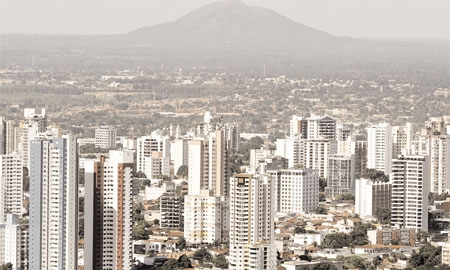Cuiaba, the capital of the state of Mato Grosso, is a city with a pleasant atmosphere, plenty of parks and green areas, and renowned for its relaxed life style. The city also has an interesting history, having been founded on the banks of the Cuiaba River in 1719 by adventuring pioneers from the state of São Paulo in search of gold. The gold rush did not result in the discovery of meaningful reserves of the precious metal and mining was not to become the backbone of Cuiaba or Mato Grosso’s economy. However the settlement grew in size throughout the 18th century and Cuiaba was granted the status of city in 1818.
In 1835 it was officially declared the capital of Mato Grosso. At the time, the territory of Mato Grosso also included the present-day state of Mato Grosso do Sul, which was only created in 1977, after the separation of northern and southern Mato Grosso.
As the gold mining industry dwindled – also due to the discovery of larger deposits in other Brazilian states – Cuiaba remained a small, agriculture-oriented city, largely isolated from the rest of the country.
The city experienced a brief boost in its population and economic activity during the six years of the Paraguayan War (1864-1870), as it was used as a supply base for Brazilian troops.
The city’s modernization and expansion, however, did not start till the 20th century. In 1914, when the city’s population stood at just 22,000, Cuaiba received a visit from President Theodore Roosevelt, as part of the U.S. President’s tour of the Amazon region. During the 1930s and 1940s urban improvements and infrastructure projects were carried out. However it was only from the 1960s and 1970s that the city and the state really started to boom, helped by the proximity of Brazil’s recently inaugurated new capital, Brasilia, and more importantly the advances in agricultural innovation.
The new economic opportunities in the agricultural sector attracted a great number of immigrants from other states; mainly São Paulo, Parana and Rio Grande do Sul. This influx contributed greatly to the cultural diversity and cosmopolitan feel of the city, as many of the immigrants were of Italian, Portuguese and Japanese origin.
Today the city has just over 550,000 inhabitants – a huge increase on the 22,000 of 1914 – and the population growth indices are falling after having peaked in the 1980s.
Most of the infrastructure works to be carried out in preparation for the 2014 World Cup will benefit Cuiaba, and the city hopes to capitalize on its proximity to some of Mato Grosso’s biggest tourist attractions in order to establish itself amongst Brazil’s key destinations.

0 COMMENTS